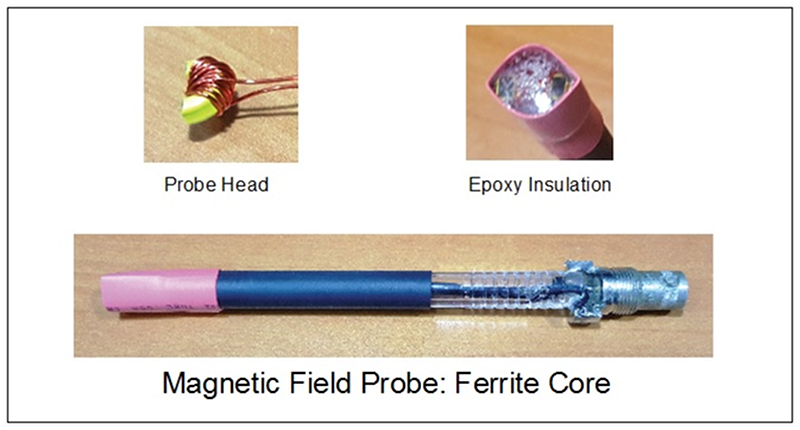[Gerald Musy] wanted to investigate the source of electromagnetic interference (EMI) in his switching power supply design. Stymied by the high cost of EMI probes, he decided to build his own. Lucky for us, he wrote up his results of experimenting with four different designs.
The probes include an unshielded loop, a shielded loop, a ferrite core probe, and an electric field probe. None of these are especially complex to build–the ferrite core one is probably the most involved–you can see from the scope traces that the different probes pick up different information.
Of course, once you identify where the EMI is coming from, your next task is what to do about it. The probes won’t help you figure that out, but identifying the source of the interference is a critical first step.
Some scope probes are very expensive commercially. Building your own can be a viable alternative. We’ve also used the old syringe trick to make specialized probes for many years.















DIY near field probes are nothing new. Just like we’ve been making our own LISN to save lots of money.
Is HAD a newspaper now?
Does anyone know how/if it’s possible to make probes from HDD read heads?
I’ve got dozens to play with. :)
How about trying it?
I’m extremely new to SMD components and microcontrollers, but I think I’ll probe around the preamplifier jack anyway. :)
Two improvements for these:
1. Use proper BNC connectors with coaxial cable so 50 ohms is maintained in the body of the probe and the signal is continuously shielded (latter being the real purpose)
2. Use semi rigid coax, such as RG405. The improved shielding and mechanical stability really helps.
Built quite a few probes for use with a network analyser back when I was making RF coils for MRI scanners.
One important step he did not consider is to characterize the probe before you use it. Every probe he built is extremely frequency dependent. So, you should at least try to get the probe exposed to a known field strenght (1V/m), then do a frequency-sweep, so you get an idea where your probe is good or bad at picking up the field. If you buy probes, you usually get a complete set with different probes for different ranges of frequency.
And it’s always good to have not only H-Field probes (magnetic field) but some E-Field probes (electric field) as well.
“- good to have not only H-Field probes (magnetic field) but some E-Field probes (electric field) as well.”
too true & the pedants will urge you to have them at right angles to each other, or
even better have them independently orientable, subject to cal of course :P
Could a tape recorder head be used for a probe?
Yes, but very limited frequency wise.
Hi,
i’m looking for an e-field probe, to measure an AC electric field between 1mV/m and 1V/m, with a frequency going from DC to 20 or 40 kHz, generated by a signal generator between 2 tracks of a PCB.
do someone know where to look for this type of probe ? does it even exist ?
I thought the website was great. Thanks! There are quite a few articles on line about building probes. Many over complicate the build for repair tech needs. I thought this was spot on for the intended audience. He does acknowledge the limitations of the ones he built and comments on building others with different cores, etc. The scope shots give a very good feel for how each version performed.
Try these links, some useful articles I have seen before:
http://www.n5dux.com/ham/files/pdf/index.php
https://archive.org/search.php?query=FOLKSCANOMY%20ELECTRONICS%20ARTICLES